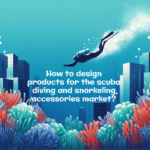How to design products for the horse riding and equestrian equipment sector
The horse riding and equestrian equipment sector is a multi-billion dollar industry that encompasses a wide range of products, from saddles and bridles to helmets and riding boots. Designing products for this industry requires a deep understanding of the needs of horses and riders, as well as the latest trends in technology and materials.
In this blog post, we will discuss the key steps involved in designing products for the horse riding and equestrian equipment sector. We will also provide tips on how to create products that are both functional and comfortable, and that meet the needs of a diverse range of users.
Step 1: Conduct market research
The first step in designing any product is to conduct market research. This involves gathering information about the target market, the competitive landscape, and the latest trends in technology and materials.
For the horse riding and equestrian equipment sector, market research may include:
- Interviewing horse owners and riders to understand their needs and pain points.
- Surveying consumers to gauge interest in new products and features.
- Analyzing sales data to identify trends and opportunities.
- Benchmarking products from competitors.
Step 2: Define the product requirements
Once you have a good understanding of the market, you can begin to define the specific requirements for your product. This includes things like:
- The target market(s).
- The primary and secondary features of the product.
- The performance and durability specifications.
- The price point.
It is important to be as specific as possible when defining the product requirements. This will help you to develop a product that meets the needs of your target market and is competitive in the marketplace.
Step 3: Generate design concepts
Once you have defined the product requirements, you can begin to generate design concepts. This is a creative process that involves brainstorming different ideas and sketching out potential designs.
When generating design concepts, it is important to consider the following factors:
- The function of the product.
- The materials and manufacturing processes that will be used.
- The target market’s aesthetic preferences.
- The competitive landscape.
- The comfort and well-being of both the horse and the rider.
Step 4: Develop prototypes
Once you have selected a design concept, you can begin to develop prototypes. Prototypes are working models of the product that can be used to test its functionality, comfort, and durability.
There are a variety of ways to develop prototypes, depending on the complexity of the product. For simple products, you may be able to create a prototype using basic materials and tools. For more complex products, you may need to use more sophisticated manufacturing processes, such as 3D printing or injection molding.
Step 5: Test and refine the product
Once you have developed a prototype, you need to test it thoroughly to identify any areas for improvement. This may involve testing the product in a laboratory setting or conducting field tests with horse owners and riders.
Based on the test results, you may need to refine the design or materials used in the product. This process may be repeated several times until you are satisfied with the product’s performance, comfort, and durability.
Step 6: Finalize the design and manufacturing process
Once you are satisfied with the product, you can finalize the design and manufacturing process. This includes creating detailed engineering drawings and specifications, as well as sourcing the necessary materials and equipment.
Step 7: Launch the product
Once the product is finalized, you can launch it to the market. This involves developing a marketing and sales plan, and distributing the product to equestrian supply stores, tack shops, and other retailers.
Tips for designing products for the horse riding and equestrian equipment sector
Here are some additional tips for designing products for the horse riding and equestrian equipment sector:
- Focus on safety and comfort. Safety is the top priority for horse owners and riders. Make sure your products are designed with safety in mind and that they are comfortable for both the horse and the rider.
- Use high-quality materials and construction methods. Equestrian equipment is often used in demanding conditions, so it is important to use high-quality materials and construction methods to ensure that it is durable and long-lasting.
- Keep the product lightweight and ergonomic. Horse owners and riders need to be able to move freely and without restriction. Design products that are lightweight and ergonomic, even when worn for long periods of time.








